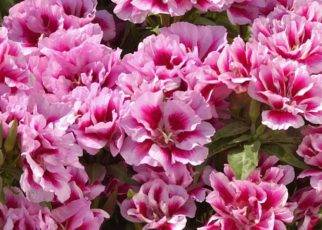Hardy biennial flowers are relatively easy to grow, but they are not for the impatient gardener. They are sown in June/July and planted in their final positions in autumn where they flower next spring. A year may seem a long time to wait for these old fashioned charmers to flower, but in this case patience is a virtue which is generously rewarded.
Sweet Williams for Scent and Cut Flowers
The sweet scented flowers of Dianthus barbatus (Sweet William) are long-lasting and make excellent cut flowers. Single-flowered mixtures are available in shades of scarlet, crimson and other reds. ‘Oeschberg’ is a brilliant magenta with crimson foliage. ‘Auricular-Eyed Mixed’ produces large, single, scented flowers with attractive eyes. ‘Homeland is a deep red with a white eye.
Foxgloves are Firm Favourites
Digitalis purpure is the true wild foxglove, a favourite for herbaceous borders and woodland walks in early summer. White flowers occasionally pop up amongst the purple. ‘Excelsior hybrids’ have flowers in pastel shades of cream-yellow, white, purple and pink. ‘Suttons Apricot’ produces tall spikes with classic tiers of apricot-pink tubular flowers. It is an outstanding cottage garden plant which richly deserves its Ward of Garden Merit given by the Royal Horticultural Society (R.H.S.).
Fragrant Wallflowers are Always Popular
The fragrant wallflower (Cherianthus cheiri) has long been one of the most popular spring bedding plants. The old fashioned tall varieties including the rich scarlet ‘Fire King’ and the deep crimson ‘Blood Red’, together with the golden-yellow ‘Cloth of Gold’ have stood the test of time.





